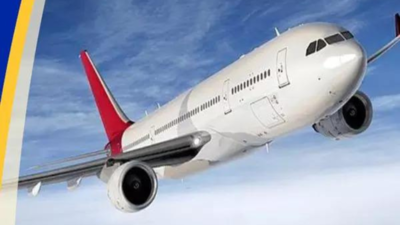
The Indian aviation sector is expected to encounter greater turbulence in FY2026, with projected net losses that can climb to Rs 95,000 to Rs 1,05,000 crore compared to Rs 55,000 crore in FY2025. The escalation in losses is driven by slowing passenger traffic growth alongside increasing aircraft deliveries, as cited by ICRA. “During FY2025, the Indian aviation industry benefited from improved pricing power, evident in higher yields, driven by healthy demand for air travel. However, the demand environment has turned more cautious in FY2026,” Kinjal Shah, the senior vice-president and co-group head of ICRA, was quoted as saying by ANI. ICRA has downgraded its growth forecast for domestic air passenger traffic in FY2026 to 4 to 6 per cent, down from the earlier estimate of 7 to 10 per cent, projecting annual domestic traffic to reach 172 to 176 million passengers.However, despite the projected losses, figures for FY2026 remain far below pandemic-era levels, when the aviation industry recorded losses of Rs 2.16 lakh crore in FY2022 and Rs 1.79 lakh crore in FY2023.Passenger traffic growth in the first quarter of FY2026 slowed to 4.4 percent year-on-year, weighed down by cross-border tensions, flight disruptions, and a travel slowdown following a recent aircraft accident. Prolonged monsoon rains in July and August, coupled with trade uncertainties from US tariffs, are expected to further suppress business travel demand in the near term.The decline in demand contributed to a 4 to 5 percent year-on-year drop in yields in Q1 FY2026. ICRA also noted that the sector’s debt metrics are expected to weaken in FY2026, with interest coverage likely falling to 1.3–1.5 times, down from 1.5 to 1.7 times in FY2025.The industry’s fleet capacity rose to 5 percent in FY2025, reaching 855 aircraft as of March 31, 2025. Airlines have placed orders for more than 1,600 aircraft over the next decade, largely to replace older planes with fuel-efficient models. Fleet grounding from engine failures and supply chain issues has improved, falling from 20 to 22 percent in September 2023 to 15 to 17 percent by March 2025, affecting about 130 aircraft, ICRA said.ICRA has highlighted that aviation turbine fuel (ATF) prices and rupee-dollar exchange rate fluctuations will remain major cost drivers for Indian airlines, with fuel accounting for 30 to 40% of operating costs.ATF prices averaged Rs 87,962 per kilolitre in the first five months of FY2026, down 8 percent from last year but still above pre-pandemic levels of Rs 64,715. The rupee also fell 3 percent against the dollar in the first four months, adding to cost pressures.











